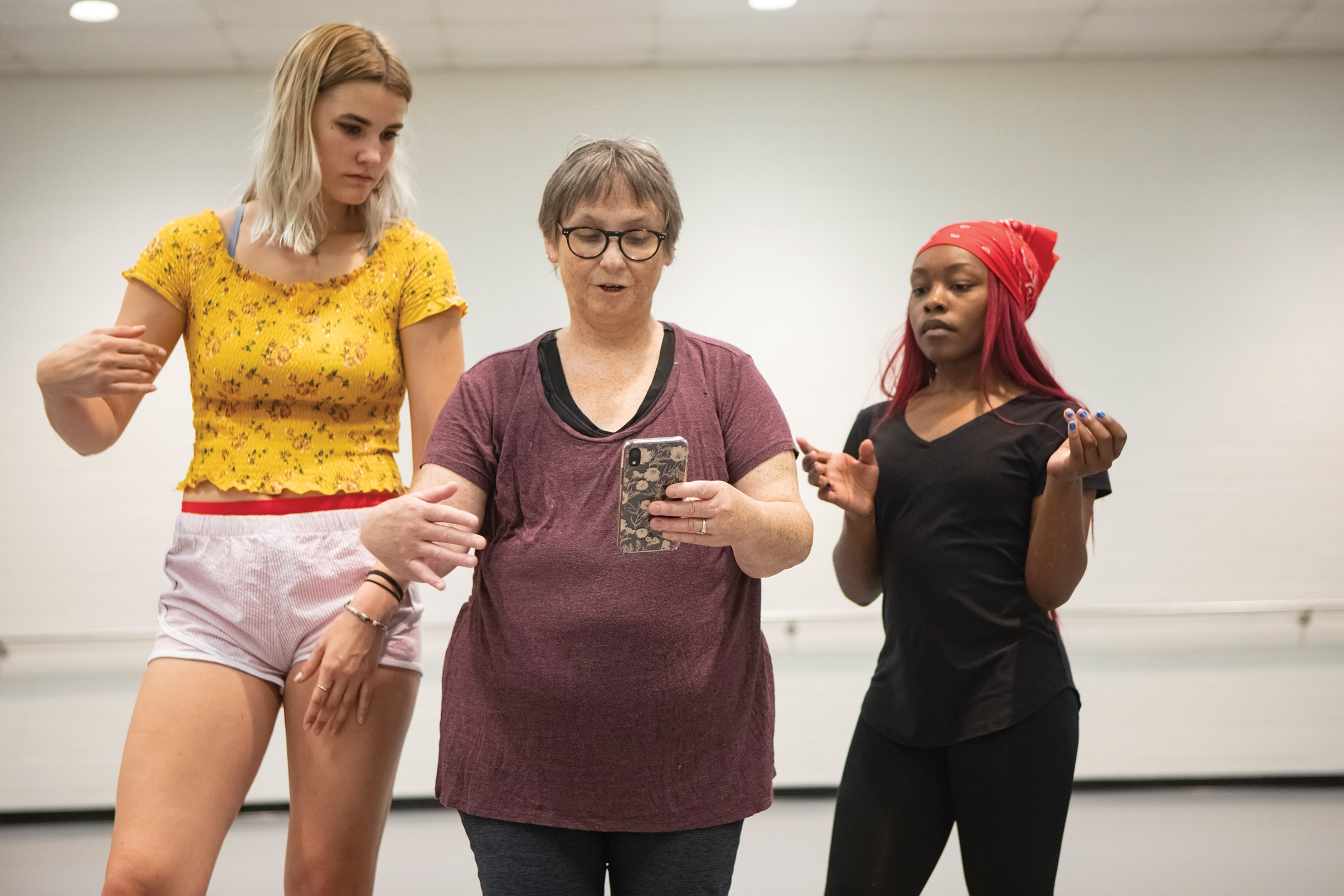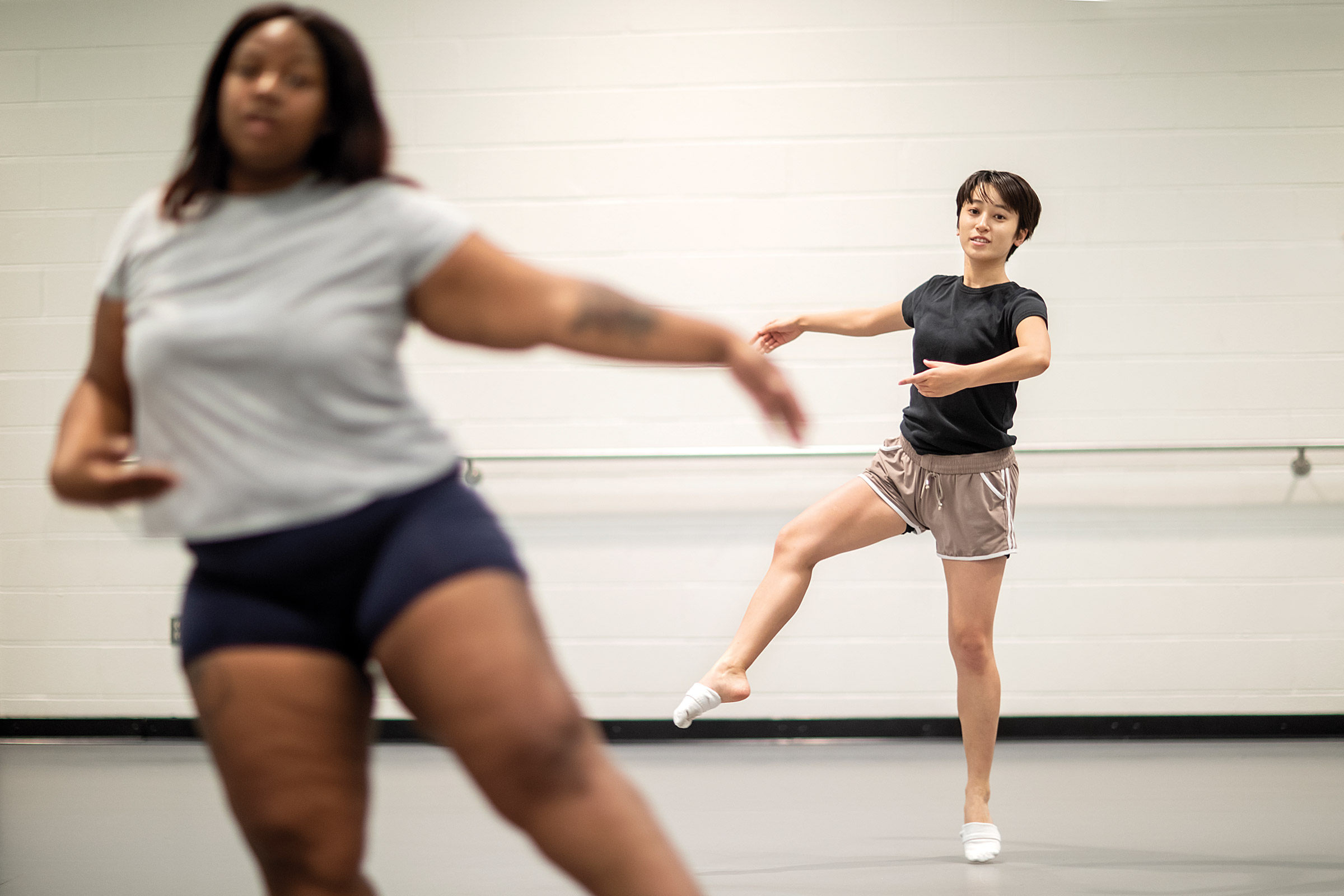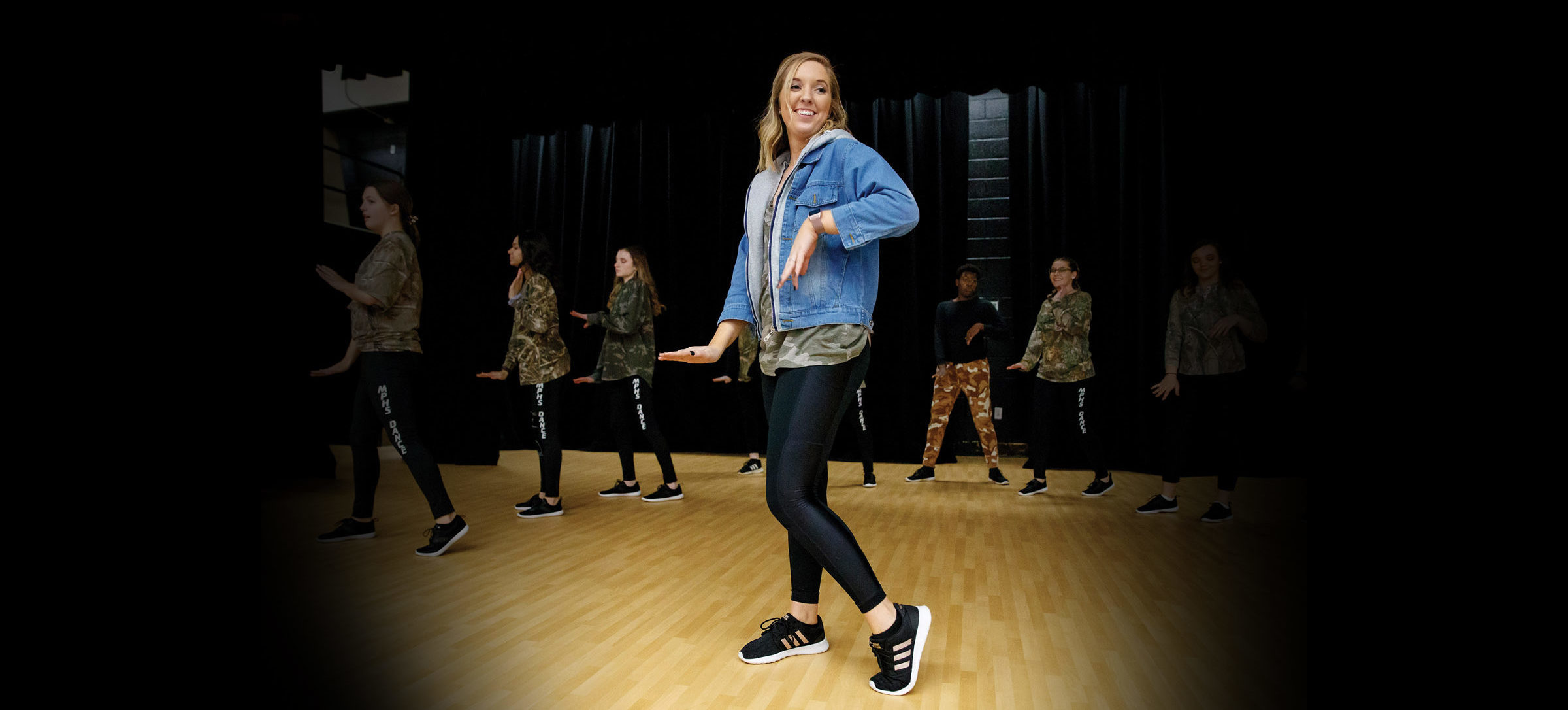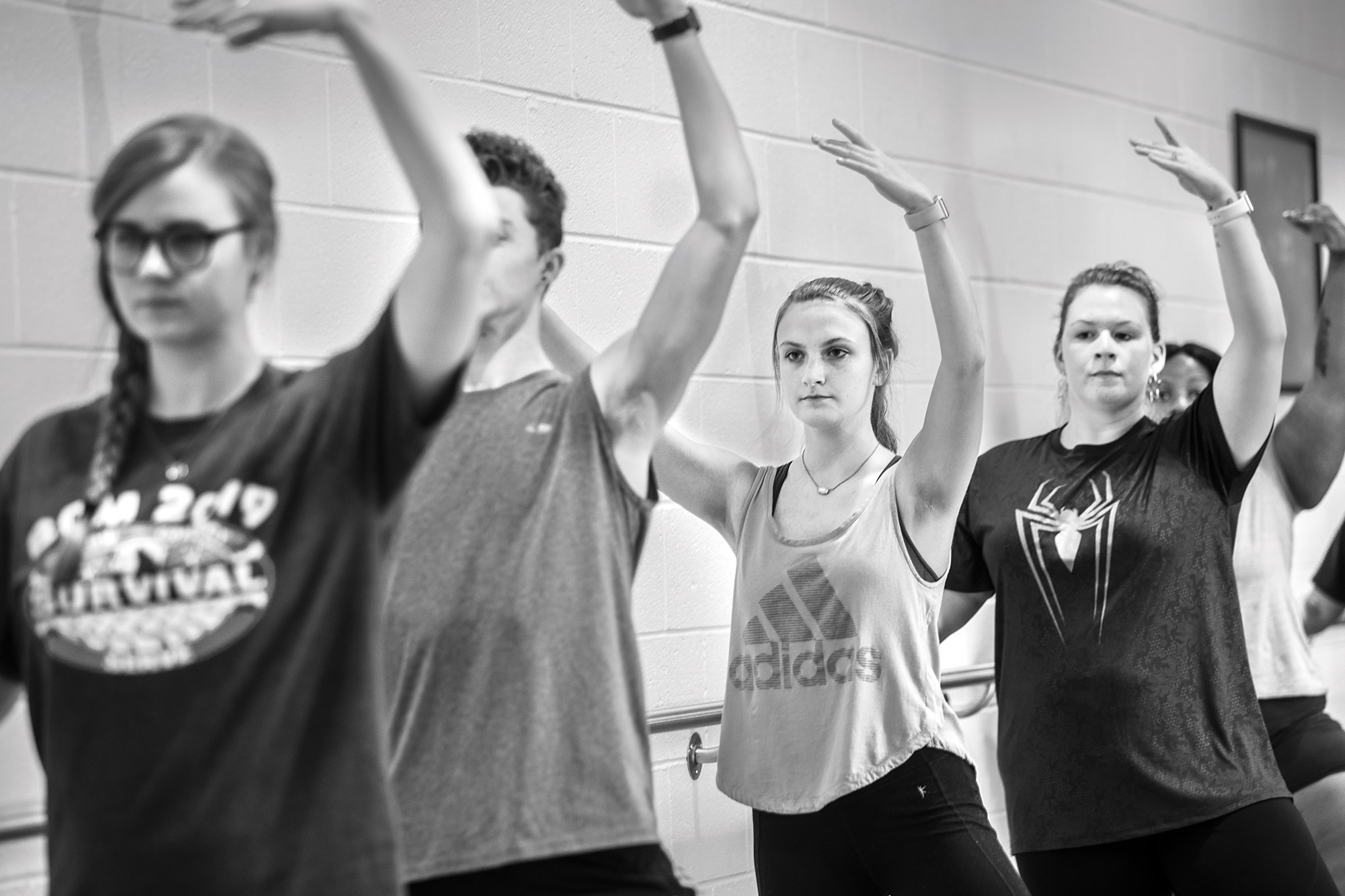Featured photo: Abby Murphy (Martin ’15) teaches a dance class at Mt. Pleasant High School.
Photo by Nathan Morgan
By Erin Chesnut
Photos by Steven Mantilla and Nathan Morgan
When Abby Murphy was 3, she saw The Nutcracker. Her parents could never have known how that family outing would put their daughter on a path to influence hundreds of other children and audience members during the next few decades.
“I started dance when I was 3, and then by second grade I decided that I wanted to be a teacher. So, when it came time for me to go to college, I realized you can get a major and actually teach dance in schools,” Murphy (Martin ’15) says.
Murphy is now the first and only dance teacher at Mt. Pleasant High School in Maury County, and she says her decision to teach high school comes from knowing how important that creative outlet was for her as a high school student.
“There’s a lot of things that happen during high school, a lot of drama, a lot of emotion; you’re trying to figure yourself out. And to be able to have dance—something that I enjoy doing, a passion—to escape to, that’s something that motivated me to begin (teaching),” she says. “Then, when we did observations in college and I saw the impact that (dance) had on the students, I ended with my senior thesis on getting dance into public schools and why it was so important. These students need that opportunity.”

Mt. Pleasant High School Principal Ryan Jackson can attest that the arts program—visual art, choir, music and theater as well as dance—has impacted the high school as a whole.
“Our attendance is up. Our enrollment is up. Discipline is way down, and our graduation rate keeps climbing. Kids are coming to school, they’re acting non-violent, and I have more kids in arts programs than we’ve ever had in this school’s history. I attribute that almost solely to the impact that art has had on the culture of our school,” he says. His experience with arts integration is not confined to Mt. Pleasant, and he says a 10-year career with inner-city schools in Nashville showed the same results.
“I had very much (seen) the power of integrating art into a STEM curriculum with inner-city students…If we can really make students feel like they belong, we can get their fingerprints on cool projects,” he says. “I saw how art could really change students’ lives.”
Arts programs, including dance, are known to increase attendance rates and test scores, encourage critical thinking and boost creative writing skills—and for good reason.
“The arts foster analytical thinking. They foster higher-level thinking skills. (Art) also fosters respect for other people’s point of view,” says Carol Eckert, professor of art and interim chair of the UT Martin Department of Visual and Theatre Arts. “The powers that be tend to push (art) aside and think of the arts as not being important, but I think they are mistaken, and I think they’re not being forward-looking. It’s that creative element that really gives people skills and problem solving. I really think we need problem solvers more than ever before.”
While most academic subjects focus on finding one right answer and eliminating other options, Eckert says the arts allow students to become comfortable with innovation and better able to find creative solutions.
“When you’re given an art assignment, there is no set answer. You have this material, and you have this problem—the assignment—and you have to figure out how you’re going to use those materials to do those things,” she says. “In most subjects, there’s one right answer. (But in art) there are multiple answers, and to me that’s the way the real world is. There’s more than one right answer to everything. In the real world, there’s a lot of gray.”
Windy Wang, assistant professor of art, frequently cites movie director James Cameron and inventor Steve Jobs as examples of creative artists in her classes, even though neither man works within the visual art realm.
“The MacBook, when it was first produced, was very unique…in terms of appearance, the menus, the functions. It was very different from other PCs,” she says. “The capability of doing things in a creative way is what makes (Jobs and Cameron) successful. These kinds of qualities would benefit people from all careers,” she says.

In the high-pressure world of standardized tests and college entrance exams, students at all levels can benefit from arts courses as outlets for stress and sources of personal confidence.
“I am a firm believer that every young person deserves the chance to just feel good about themselves. That sounds really basic, but that is key to confidence as a human being,” says Julie Hill (Martin ’94), professor of music and chair of the UT Martin Department of Music. “Having the opportunity to feel good about oneself will allow you the confidence to tackle any obstacles in life, and for some young people that will not exist through math or science or sports. (Young people) deserve those opportunities, and it can absolutely be a game changer.”
“We have students who want to be artists or they want to share their love of the arts, and they can do that. But our field can also provide an outlet (for others),” Eckert says. “I’ve had pre-med students (in my classes), and (their advisers) tell them, ‘You need to have something besides your career or you’re going to burn out.’ … I think there are some fields that are recognizing the importance (of the arts), … that it’s not just about work.”

However, using an arts class to relieve stress does not mean it is all fun and games. While some may remember elementary arts classes focusing on make-and-take projects with little relevance to other courses, art is now being taught as an integrated subject area with many connections to core academic courses.
“The way art is taught now, it’s not isolated. It’s really integrated into the curriculum, and it has a very active part in fostering the skills that students need in order to be productive and happy citizens,” Wang says. “The contextual information that is offered through art classes…(is) definitely related to history, to social science, to literature, to language, to literacy.”
“It’s not just about the creating,” adds Eckert. “It’s also about being able to talk about what you created and make connections to other subjects and other work. It’s much more of a discipline than it used to be.”
For example, students who study the Romans during a history course can come to a better understanding of Roman culture when they see and recreate traditional Roman artwork and discuss how that artwork was influenced by cultures later conquered by the Roman Empire.

Justin Paschall (Martin ’07) has used dance to teach mathematics.
“After I left (UT Martin), I moved to Chattanooga, where I took a job at a fine arts elementary school. We were doing a lot of arts integration, which was mostly teaching the core curriculum standards through art,” he says. “One of the lessons I would teach was about fractions. So, let’s break our body down into a fraction. We have one whole, and we have one half…How do you cut your body into one half? Now, what is one quarter? What is one third? And so we would break it down that way to use creative movement.”
Paschall was the first person to graduate from UT Martin with a degree in dance education and a license to teach dance in the state of Tennessee. He says the decision to help pioneer a new degree program rather than major in fine and performing arts changed the course of his career.
“I’ve got friends who are living eight high in a two-bedroom apartment in New York (City) being table waiters right now, but the dance ed degree allows me to teach in public schools (and) allowed me a lot more opportunities,” he says.
UT Martin is the only university in Tennessee to offer a dance education degree with K-12 certification. Students in this major take dance courses as well as education courses and complete their student teaching rotations in dance classes rather than more traditional academic subjects.
“You do have the option of getting a major in dance, however, that does not qualify you to teach in public or private schools,” explains Murphy. “That does separate (UT) Martin from most other colleges. Had I just gotten a degree in fine arts, I would also have had to get that education background, which would have been two degrees to try and balance.”
From saxophones in Memphis to toe shoes in Mt. Pleasant and paintbrushes in Mountain City, arts education is influencing the next generation of Tennessee dreamers. The UT Martin programs in art, music and dance education are training teachers to make arts programs available for all students and bring color and passion back into pre-K-12 schools across the state.






